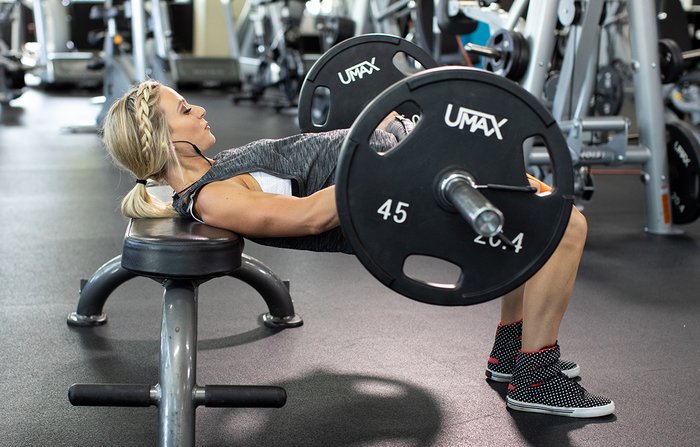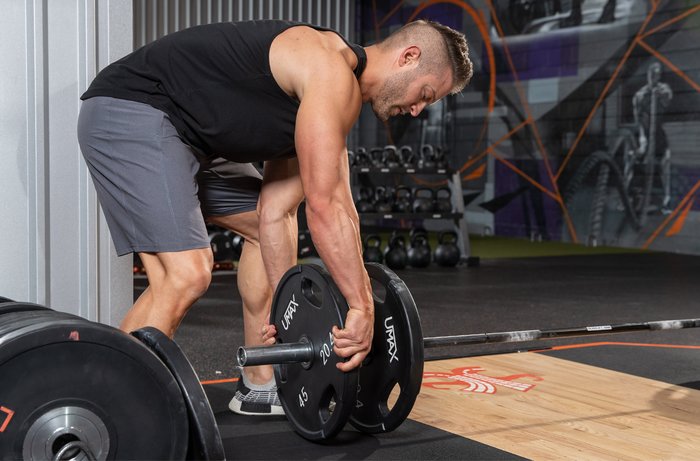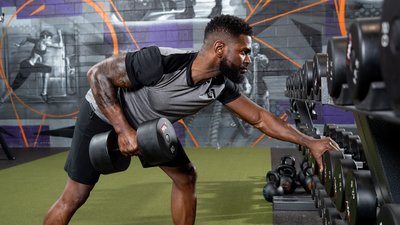The idea of high-frequency training rises in appeal periodically, usually based on circumstances. Maybe you live next to (or work at) a gym and see the possibility of training every day. Or maybe a global pandemic puts the gym entirely off-limits, and you're finding that you have plenty of time to kill each and every day in your home gym.
This is where the hardcore zealots usually chime in to say there are "no excuses" if you want to make serious gains. And sure, that mindset can help you put training on the menu, but it doesn't tell you what to do, or how to structure your training to make it sustainable for weeks at a time.
I'm here to inject a dose of reality into the picture. If you're going to ditch the schedule of 3-4 days a week and go higher frequency or even daily, I'll give you the ground rules and priorities that will help you make the most of it.
My Daily Training Experiment
In 2018, I conducted an experiment where I weight trained for 365 days in a row. You read that right: 7 days per week for a year. This initially started out as something of a rehab project, as months before I started, I had a double reconstructive knee surgery for tearing both patellar tendons. But once I was out of the pure "rehab" mindset I decided to set my new goal. These were the rules:
- I must train for at least 30-40 minutes.
- The workout must involve some form of resistance training. Doing the elliptical and mobility work doesn't count. Sure, I could do it, it just wouldn't count.
In doing so I learned a lot about my body, my rehab, and my own training that I think can have plenty of carryover to others. If your goal is to sustain high-frequency training, then this should be worthwhile.
Rule 1. Use Indicator Sets, Not Percentages
Unless you're a high-level competitive strength athlete, in which case you have your own rules, then my advice would be this: Train like you don't compete. In other words, don't sweat all the strength standards and percentages. Seriously, they don't apply here, and the more you try to stick to them while training daily, the more you'll end up frustrated and injured.
Second of all, if you're training every day, you can bet your bottom dollar you're going to be going into more than half your workouts with a less than optimal energy or motivation levels. That's a fact. Poor recovery, poor sleep, muscle soreness—they will happen. And if you really expect yourself to maintain consistent levels of top-end strength, think again.

That doesn't mean heavy lifting and great workouts are off the table, though. When you have a day where you feel good and want to lift heavy, it's simply important to have some kind of "signal" before you push the envelope. This can be the difference between a bruised ego or injury, and a successful workout that feels fantastic.
Here's how I do it: Find a weight in one of your big lifts that you're comfortable moving in your sleep. That weight should be "heavy," but not anything close to your max. When you get to that weight in your ramp-up, examine how easily that load moves. Does it go up like butter? Is it a grind? Does it cause any pain? My friend Tony Gentilcore calls this an "indicator set." For me, when it comes to squats, deadlifts, and bench presses, that indicator weight is usually 275 pounds. Based on your knowledge of what "heavy" means for you, find the indicator set weight that works for you.
How it feels determines whether I back things off and don't push it to, say, a solid triple. In the event that I'm not having a great day strength-wise, then I would step down from that indicator set and do a back-off set or two.
When I was doing plenty of Olympic lift training, this approach was a staple of the post-workout squats we'd perform with high frequency. Instead of doing 3 sets of heavy singles or doubles on the regular, we'd do 1 top set, then go down by 10 percent for 2 sets of 2-3.
Rule 2. Embrace the Split
If you think you'll be able to torch your full body intensely on a seven-day workout plan, you'd better hope your nutrition and sleep are completely spotless. (Spoiler alert: They're not.)
For the rest of us who know the above isn't quite realistic, it serves us best to get on a split routine. And no, it doesn't have to be a full bro split. It can focus on halves of the body (upper/lower or front/back), movement patterns (pulling/pushing), or include multiple groups or regions of the body (chest/back) rather than individual muscles. But each workout should have a different focus.

On such a structure, you can still double up on certain muscle groups per week. For example, you could do some hip thrusts at the end of what is otherwise an upper-body focused day, or train calves with both chest and legs. If you're a pro at dialing back volume and using different movements, you could even do full-body training while maintaining the split or "focus" mentality. But the idea is to let the muscles you trained recover.
As a side note, within reason, there's no harm in training while sore; soreness only reduces range of motion—not strength. But the truth is, most people are better served to either let sore muscles rest or use only light movement, rather than push a sore muscle over and over again.
Rule 3. Upgrade Your Ramp-Up Set
When it comes to volume, people can tend to think in very strict terms: More volume equals more sets and total reps of an exercise. Although that's not wrong, there's more to it than just that.
Let's say you're doing a squat workout and you're planning to hit 5 sets of 8 reps at a working weight of somewhere around 75 percent (indicator sets notwithstanding) of your max. You're probably going to ramp up to whatever that weight is, rather than slap it all on the bar for your first set, right? A lifter who is focused on squatting 300 for his working sets would most likely ramp up like this:
- 95 x 5 reps
- 135 x 3
- 185 x 2
- 205 x 2
- 225 x 2
- 250 x 2
- 275 x 2
- 300 x 8 x 5 sets
If you do the math, the cumulative weight lifted comes out to 15,160 pounds spread across 58 reps. But, the chances of running out of steam or hitting the endurance wall is pretty high.

For high-frequency training, I like to use what I call the "Jail Method," where you add volume to all ramping sets, but only perform 1-2 max sets. It would look like this:
- 95 x 8 reps
- 135 x 8
- 185 x 8
- 205 x 8
- 225 x 8
- 250 x 8
- 275 x 8
- 300 x 8 x 2 sets
Here, the total is 15,760 pounds spread across 72 reps. Sure, you'll be exhausted, because you just did 8 reps for every ramping set, but you'll also be able to remain more technically sound because the ramping sets aren't pushing the threshold of your 8-rep max. This "trick" allows you to do more work, without crushing yourself under heavy weights to a degree that will keep you from being able to come back again and train soon. You'll notice the difference.
Rule 4. Prioritize Size More Than Strength
Sorry, strength-chasers! You can tell me about how the Bulgarians do it all you want, but from this coach's perspective, extremely high-frequency training is going to be much friendlier to someone who's after hypertrophy than it is for someone who's looking to set new lifting records in the gym.
Why? Because training for serious strength requires having your high threshold motor units work at the best of their potential on as many sets as possible. Do this right, and you'll hit your head against the wall of fatigue over and over again. You might be able to pull it off for a while, but if this is going to be a months-long approach, you're best served to set your goals accordingly.

Training for muscle size rather than strength is far more friendly to things like intuitive training, rates of perceived exertion (rather than percentages), volume tweaking, and other intangibles that can sustain high-frequency training over the long haul. Plus, it allows you to use more single-joint or isolation exercises, which can help you hit muscle groups more often without having to rely solely on heavy compound work.
One other thing that's great about muscle-focused training is that it works well with conditioning work. If you're going high-frequency, I'd recommend using loaded carries and other strongman-style dynamic exercises that involve locomotion. Sled pushes and pulls, farmer's walks, atlas carries, yoke carries, and over-the-shoulder tosses are all in my arsenal for this style of conditioning.
Now go start exploring.
Like high-frequency training with an old-school mentality? Try the Blueprint to Cut in BodyFit Elite. You'll train six days a week on a classic split and use barbells, dumbbells, select machines, and body weight.

